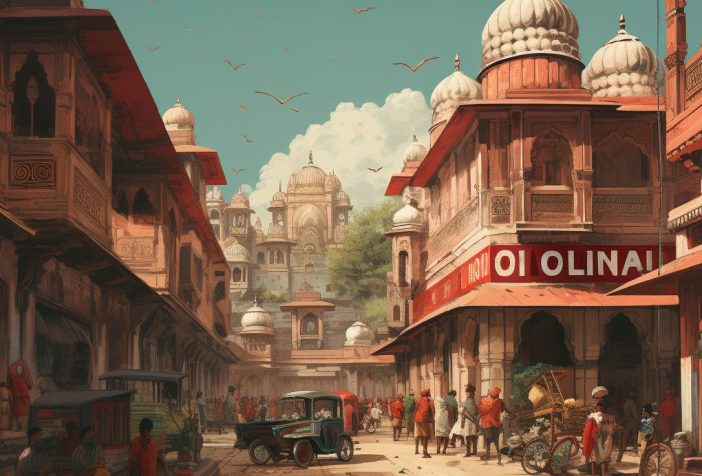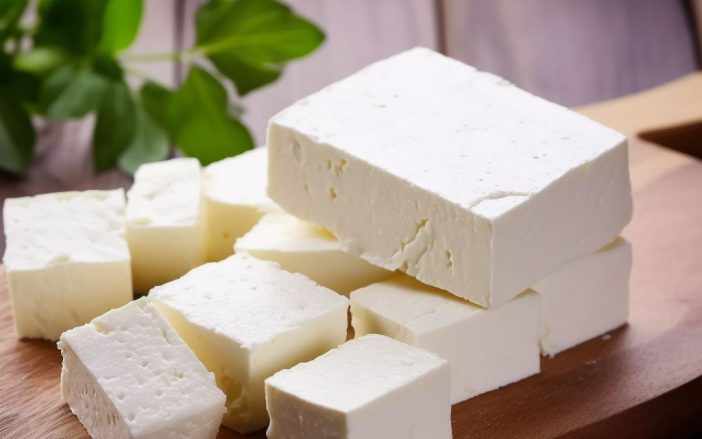Dear reader, imagine stepping into a bustling Indian kitchen, the aroma of spices swirling in the air. Amidst the vibrant colours and sizzling sounds lies a humble yet extraordinary ingredient: paneer. ? This fresh, non-melting cheese, created by curdling full-fat milk with lemon juice or vinegar, holds a special place in Indian cuisine. With its mild, milky flavour and firm, spongy texture, paneer is ready to transform into culinary delights. ?? Whether grilled as paneer tikka, nestled in a rich tomato gravy for shahi paneer, or simmered with spinach in palak paneer, this versatile cheese absorbs the essence of every dish it graces.
Please follow the link to the recipe ➡️:
https://www.youtube.com/shorts/ASxl-xO9VdU
Where Does Paneer Come From? ?️
Paneer has become a staple, especially cherished by vegetarians for its rich protein content and ability to take on bold flavours. Its origins are a delightful blend of cultural influences and historical mysteries. Imagine the bustling courts of 16th-century North India, where Persian and Afghan rulers introduced the art of curdling milk with an acid, initially using goat or sheep milk, to create a cheese known as ‘panir’. ? Fast forward to the 17th century, where Portuguese settlers in Bengal imparted their knowledge of breaking milk with lemon juice to create fresh cheeses, leading to the birth of chhena, a close cousin of paneer. While some ancient Indian texts hint at early forms of milk products, it’s the confluence of these foreign influences that solidified paneer’s place in Indian cuisine.

Envision paneer stuffed into flaky parathas and golden naans in North Indian homes, or crisped into pakoras and swirled into spiced biryanis. Imagine it taking on a fusion twist in Indo-Chinese dishes like chilli paneer or being transformed into sweet delights such as sandesh and rasmalai. Next time you crave something unique, let paneer whisk ??? you away on a flavourful journey through a piece of history that continues to delight palates today.
How is paneer made? ?
Unlike cheeses made with rennet and live cultures that require extended aging and controlled humidity, making paneer is a simple process that can be done at home in just a few hours.

1. Boiling the Milk ?: Bring two quarts of whole milk to a rolling boil over medium heat, stirring frequently to prevent burning. Let it boil for two minutes.
2. Curdling ?: While the milk is boiling, mix two tablespoons of lemon juice with one cup of water. After boiling for two minutes, remove the milk from heat, add the lemon juice solution, and stir gently. You’ll soon see white curds separating from the greenish whey.
3. Cooling and Straining: Add chilled water to the mixture to stop the cooking and soften the paneer. Pour the mixture through a strainer lined with cheesecloth or muslin. Some save the whey for other recipes, like making chapati.
4. Washing and Shaping: Gather the cloth loosely and wash the curds with cold water by dipping them in a series of bowls until the liquid runs clear, reducing sourness.
5. Pressing ?: Twist the cloth tightly to squeeze out the liquid, form the curds into a flat disc, and press it with a heavy object like an iron pan. After 30 minutes to two hours, the paneer is ready to eat.
To store paneer effectively, place it in a container filled with water. Submerging the paneer in water helps prevent it from drying out and becoming rubbery when heated. Fresh paneer can be kept in the refrigerator for up to a week this way. For optimal freshness, change the water every 2 to 3 days.
Substitutes ?
Paneer belongs to the category of fresh, non-melting cheeses. If you need a substitute, choose another cheese from this category. Good options include queso fresco, halloumi, farmer cheese, or mild feta with the brine rinsed off. Firm tofu can also work as an alternative.
Elavate your curry game with paneer ?️
Follow along with my video on how to make paneer butter masala!
? Prep Time: 10 min | ??? Cook Time: 15 min | ⏱️ Total Time: 25 min |?Servings: 3-4
? Ingredients:

- 100 g paneer
- 100 g tomato sauce
- 4 garlic cloves
- 1 onion
- 3 green chilis
- Salt, pepper and dried chili flakes, oil
? Instructions:
- Heat a pan and add a small amount of oil. Cut the paneer into squares and fry them until they are golden brown. ?
- Use another pan while the paneer is frying to prepare the gravy sauce.
- Enter a little oil and fry the green chili first. After two minutes enter the chopped garlic and onion into the pan. Let it fry for 4 minutes until they turn golden.
- Enter salt, pepper and the dried chili flakes.
- Enter 100g of tomato sauce. (I usually use the Barilla arrabbiata sauce) ?
- Stir the tomato sauce till it boils.
- Enter the golden paneer into the tomato gravy and let it simmer for another 5 minutes.
Now that the paneer butter masala is ready, savor it with fragrant Basmati rice and warm Naan bread. For those who prefer a milder flavor, blend the paneer butter masala with natural yogurt. This creates a delightful balance of flavors. Enjoy! ??
The paneer butter masala can be stored for up to 2-3 days. However, it’s best not to keep it for longer periods as it contains milk and may spoil quickly. Remember to refrigerate it promptly to maintain its freshness.
I’m confident you’ll find this paneer butter masala as delightful as I do. Share your thoughts by dropping a comment below. Did its creamy texture tantalise your taste buds? ? Did it fill your soul with warmth and satisfaction? Let’s savor this culinary experience together!
Previous Blog Posts:
- Dive into a week of Kola Kenda? and unlock its healing magic – I’m eager to read about your experiences!
- And if you’re intrigued for more tantalizing Tamil recipes and curious about their rich heritage, don’t miss my video guide to aromatic islamic Biryani ?
- and blog post on ABC-shots for that post-yoga power boost! ??♀️
- I also made a blog post on Unboxing: 7 Karma Convenience Vegetarian Products ?
Bibliography:
1. Nalavade, P., Nalavade, P., & Nalavade, P. (2023, May 19). What is Paneer? Everything to Know About This Indian Cheese. Sukhi’s – Irresistible Indian Cuisine. https://sukhis.com/what-is-paneer-everything-to-know-about-this-indian-cheese/
2. Raghavan, A. (2016, July 30). Paneer and the origin of cheese in India. The Hindu. https://www.thehindu.com/news/cities/mumbai/Paneer-and-the-origin-of-cheese-in-India/article14516958.ece
3. Alfaro, D. (2022, September 8). What is paneer cheese? The Spruce Eats. https://www.thespruceeats.com/what-is-paneer-cheese-5184902




My favorite Paneer! Thanks for the recipe I will give it a try 🙂
Fantastic post! I love how you’ve highlighted paneer’s rich history and its versatility in dishes. Your guide on making paneer at home is clear and encouraging. I’m especially excited to try the paneer butter masala recipe—it sounds delicious.?
My most favorite recipe! There is nothing more delicious than a dish with curry sauce 🙂